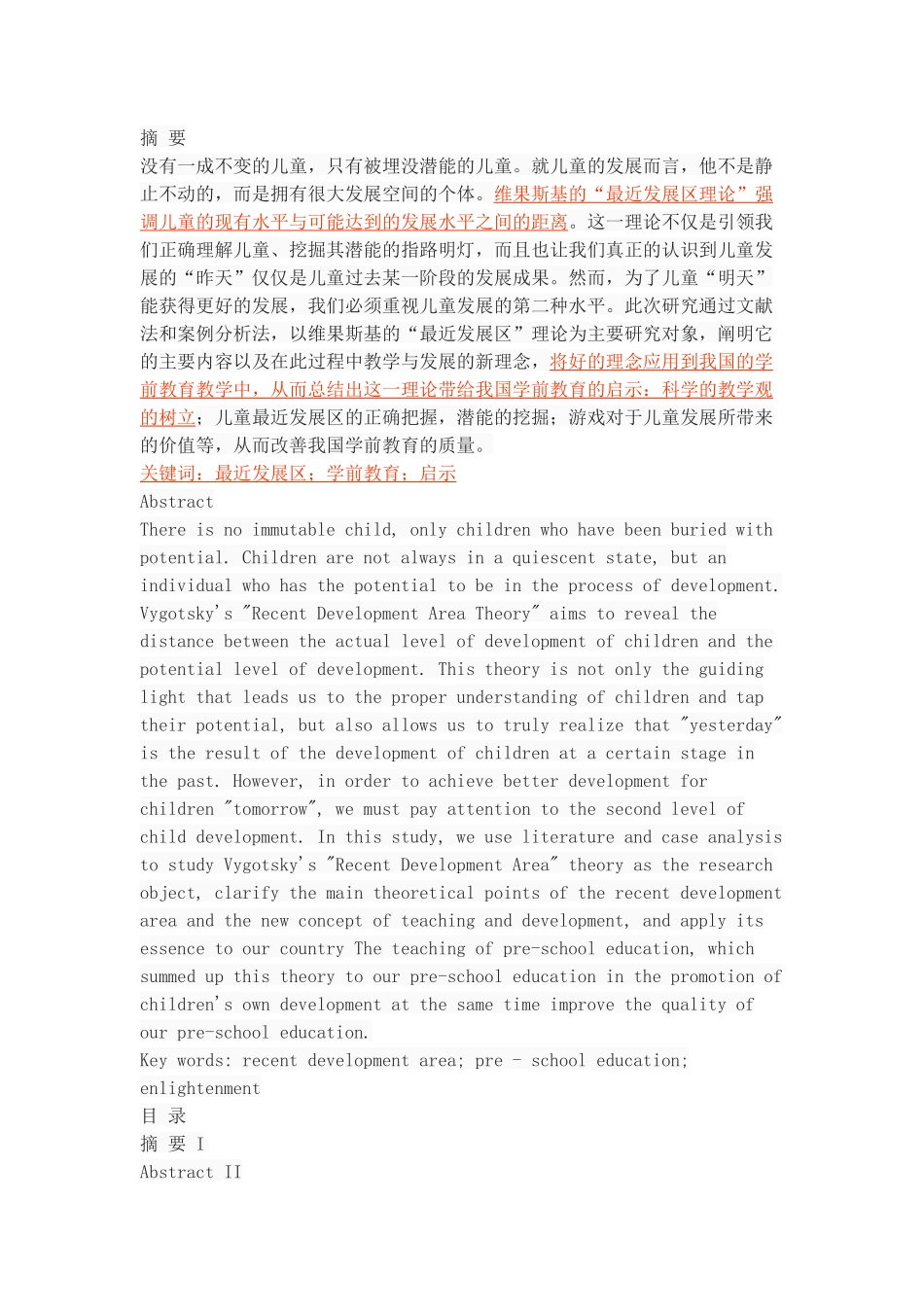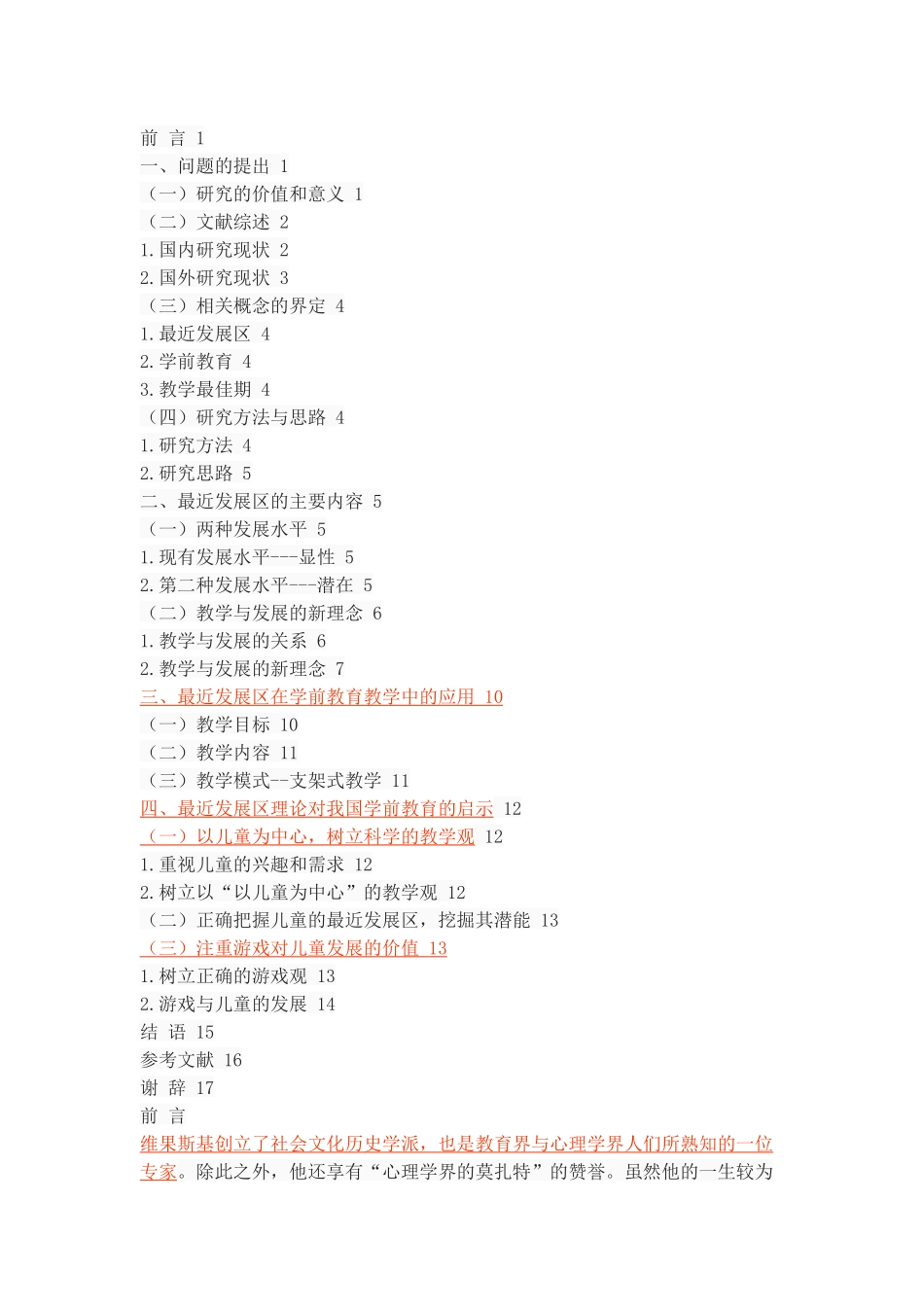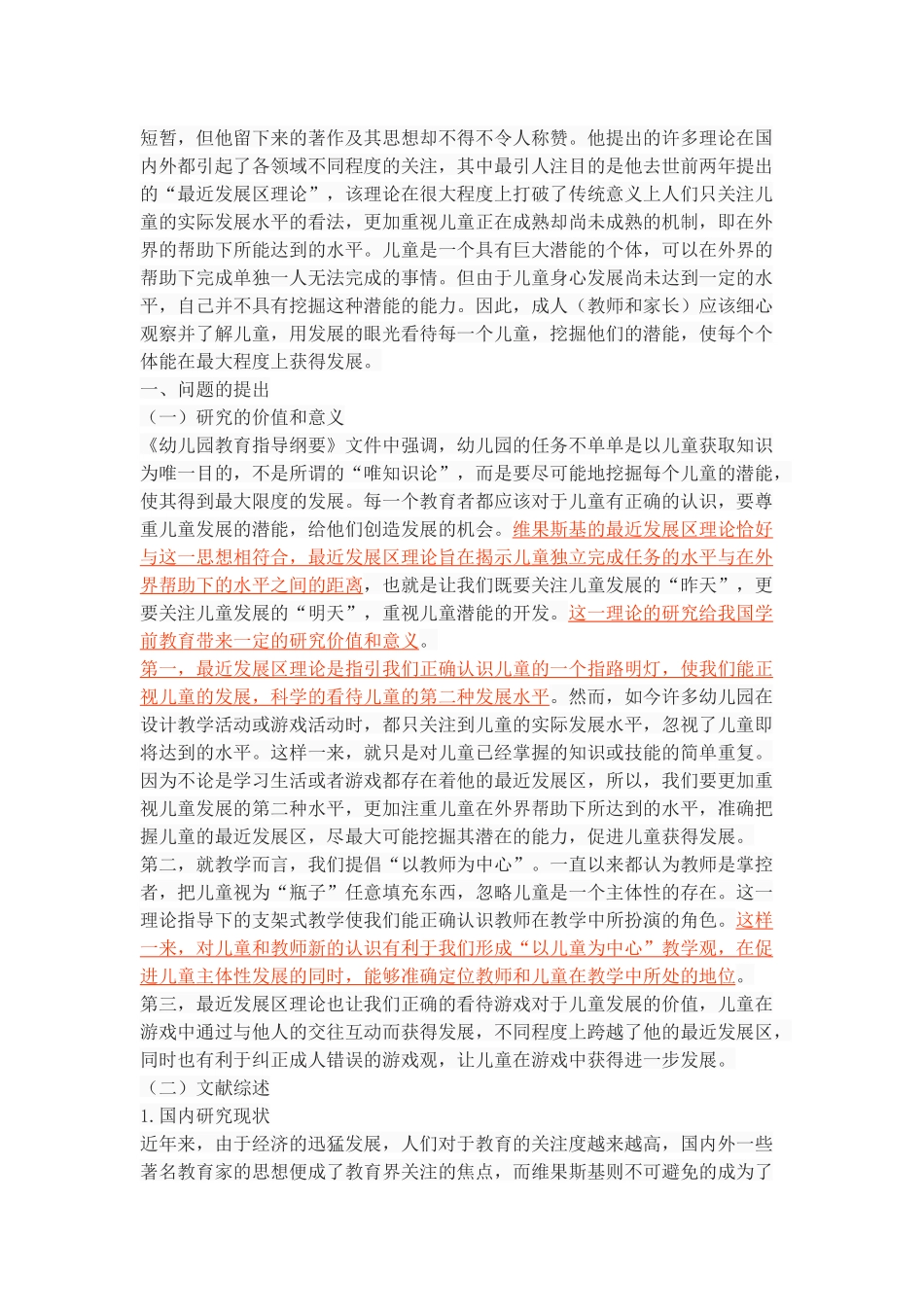摘 要没有一成不变的儿童,只有被埋没潜能的儿童。就儿童的发展而言,他不是静止不动的,而是拥有很大发展空间的个体。维果斯基的“最近发展区理论”强调儿童的现有水平与可能达到的发展水平之间的距离。这一理论不仅是引领我们正确理解儿童、挖掘其潜能的指路明灯,而且也让我们真正的认识到儿童发展的“昨天”仅仅是儿童过去某一阶段的发展成果。然而,为了儿童“明天”能获得更好的发展,我们必须重视儿童发展的第二种水平。此次研究通过文献法和案例分析法,以维果斯基的“最近发展区”理论为主要研究对象,阐明它的主要内容以及在此过程中教学与发展的新理念,将好的理念应用到我国的学前教育教学中,从而总结出这一理论带给我国学前教育的启示:科学的教学观的树立;儿童最近发展区的正确把握,潜能的挖掘;游戏对于儿童发展所带来的价值等,从而改善我国学前教育的质量。关键词:最近发展区;学前教育;启示AbstractThere is no immutable child, only children who have been buried with potential. Children are not always in a quiescent state, but an individual who has the potential to be in the process of development. Vygotsky's "Recent Development Area Theory" aims to reveal the distance between the actual level of development of children and the potential level of development. This theory is not only the guiding light that leads us to the proper understanding of children and tap their potential, but also allows us to truly realize that "yesterday" is the result of the development of children at a certain stage in the past. However, in order to achieve better development for children "tomorrow", we must pay attention to the second level of child development. In this study, we use literature and case analysis to study Vygotsky's "Recent Development Area" theory as the research object, clarify the main theoretical points of the recent development area and the new concept of teaching and development, and apply its essence to our country The teaching of pre-sc...












